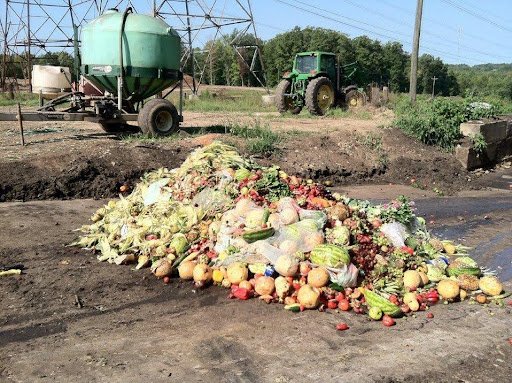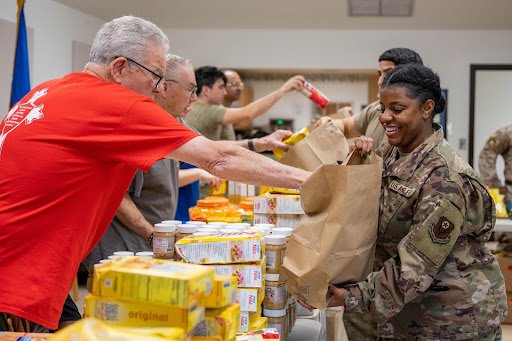Food waste is one of those problems we all know exists, but we do not really talk about it enough. Can tech, through machine learning, solve this problem?
Food waste is a global problem, and it starts with you and me. You throw out a half-eaten sandwich or forget a bag of spinach in the fridge, and it does not feel like a big deal. But when millions of people do that every day? It adds up to a staggering amount of waste. This problem is catered to by the technology of machine learning, which aims to reduce the same.
Globally, about one-third of all food produced never gets eaten. That is not just a statistic, they are real meals, real money, and a real strain on our planet. Behind every tossed apple or expired carton of milk is wasted water, fuel, time, and labor. And to make it worse, most of that waste ends up in landfills, releasing methane, which is even worse for the climate than carbon dioxide.
And yet, so much of it is avoidable. Some of the waste is personal. We forget what we bought, or cook too much. But a huge chunk happens way earlier, in restaurants, supermarkets, even on farms. The reasons? Bad planning, clunky logistics, and sometimes just plain old guesswork. This is where tech, especially machine learning, has a chance to step in, not to fix everything overnight, but to actually make a dent.

If we are being real, the food system is complicated. And a lot of the waste comes down to timing and data: what is needed, when, and how much. Restaurants, for instance, often have no clear way to predict how many customers will show up on a given day. Supermarkets throw out food that is still good because they would rather be safe than sorry. Even farmers sometimes dump crops because transporting them costs more than they are worth.
This is not about blaming anyone. It is about realizing how outdated some of the systems are. Thus, tech can help, not in a flashy, sci-fi way, but in small, practical ways that actually matter.
A simple example: what if a bakery could look at weather data, customer habits, and past sales to know how much bread to make on a Tuesday? That is a real solution, not a gimmick. Or what if a grocery store could get automatic alerts when certain stock is about to expire? The beauty of today’s tech is that it does not just collect data, it can understand it. And that is where machine learning becomes more than just a buzzword.
Let us break it down. Machine learning is like teaching computers how to recognize patterns. Over time, the system learns from past data and starts to make smarter guesses. It is not magic, it is math, mixed with logic and a lot of real-world examples.
When it comes to food waste, machine learning can:
Cafés and restaurants often face the challenge of guessing how much food to prepare each day. Too little means unhappy customers. Too much means waste. Machine learning helps by studying customer trends, weather, holidays, and past sales to make better forecasts. For example, a bakery might learn that sales drop on rainy weekdays, helping them reduce overproduction.
With the help of sensors and smart tools, businesses can now track how much stock they have, what is about to expire, and what is selling fast. Machine learning can highlight patterns, like which items often go unsold, and suggest better purchasing decisions. This reduces spoilage and saves money.
From farm to table, food travels a long way. Along the way, delays or poor storage can lead to spoilage. Machine learning tools can analyze shipping times, temperature changes, and delivery routes to flag risks before they cause waste. Retailers can get alerts in advance and take action.
Apps powered by machine learning can scan your fridge, suggest recipes based on what you have, and even remind you of expiration dates. These tools are making it easier for everyday users to reduce waste, one meal at a time.
Many platforms are now connecting restaurants or grocery stores with charities and food banks. Machine learning helps by organizing data, knowing when surplus food is available, what kind it is, and who needs it most. This reduces waste and feeds more people.

If you are in tech and want to build something that is both smart and meaningful, this is it. Food waste is not just a sustainability issue; it is a logistics issue, a planning issue, and honestly, a design issue. It is a problem begging for better systems, better tools, and more human-focused thinking.
And the good news? You do not have to be a giant company to make an impact. A well-built dashboard that helps restaurants manage daily prep, or an app that nudges people to use their groceries before they go bad; those things matter.
The tools we build do not have to be perfect. But if they are thoughtful, grounded, and solve a small, specific problem in the food chain, they can save tons of food over time. Literally.
So if your team is working on tech that helps people waste less, plan better, or simply be more aware, keep going. The world needs it. And if you are not sure where to start, let us talk. We love helping startups build tools that make real, measurable change.
References:
https://www.weforum.org/stories/2023/03/food-waste-makes-up-half-of-global-food-system-emissions/
https://www.fao.org/4/mb060e/mb060e00.htm
https://en.wikipedia.org/wiki/Sustainable_food_system
https://en.wikipedia.org/wiki/Food_rescue
https://wokegenics.com/make-life-easier-use-ai-chatbots-for-daily-tasks/
https://wokegenics.com/the-future-of-earth-climate-change-starts-now/
https://wokegenics.com/green-future-2025-top-eco-tech-solutions/
https://wokegenics.com/the-latest-ai-innovations-whats-next/
https://wokegenics.com/2025-blockchain-trends-how-technology-is-driving-industry-innovation/